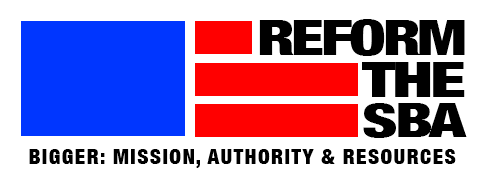“You hear a lot about food deserts,” said Villarreal. “Not only are there food deserts, but there are financial deserts, meaning there isn’t a bank or financial institution in those communities. And if there is a ‘financial institution,’ it’s a payday lender. It’s not a responsible lender.”
PYMNTS.com
April 1, 2021
Rethinking The Flow Of SMB Capital Into Underserved Financial Deserts
By PYMNTS
The survival of small- to medium-sized businesses (SMBs) hinges on availability of capital, a truth made painfully evident over the last year amid the pandemic.
Yet for all of the state- and federal-level initiatives working to get funds into the hands of Main Street business owners, underserved and under-banked areas — often BIPOC (black, indigenous and people of color) communities — are still seeing their local entrepreneurs struggle.
Whether the result of the lack of financial institution (FI) presence or inadequate underwriting capabilities among the FIs that do exist in these communities, under-banked SMBs are being failed by the traditional efforts to address these capital gaps.
That’s according to Robert Villarreal, executive vice president of CDC Small Business Finance and president of the Small Business Finance Fund (Bankers Small Business CDC of California). Speaking with PYMNTS, Villarreal described why current strategies to address under-financed SMBs are falling short, and why an entire overhaul of the capital markets is needed to level the playing field for minority business borrowers.
Financial Deserts
A lack of access to affordable business financing is just one of the many obstacles faced by underserved communities.
“You hear a lot about food deserts,” said Villarreal. “Not only are there food deserts, but there are financial deserts, meaning there isn’t a bank or financial institution in those communities. And if there is a ‘financial institution,’ it’s a payday lender. It’s not a responsible lender.”
The pandemic has intensified the consequences of this lack of access to affordable capital. And while various government-led initiatives to drive more funding into the hands of SMB owners have ramped up as a result of the crisis, Villarreal explained that the flow of funds through the structure of the traditional capital markets fails to saturate these communities and alleviate their financial drought.
To illustrate this challenge, he pointed to the Small Business Administration (SBA), arguably the largest government-led institution designed to connect SMBs to working capital.
The SBA operates through those traditional FIs and big banks that are absent in these financial deserts. This creates a “wall” blocking the flow of those funds into these underserved communities. Exacerbating the challenge is the fact that on the demand side, SMB owners can often lack the resources and understanding of how to best access that funding.
Limited technological expertise or awareness means the inability for FinTechs and digital-first platforms — although often intended to address these underserved populations — to make an adequate impact.
Place-Based Financing
While the funding exists, it will take an entirely revamped approach to discover the best avenues it can flow through to reach the SMBs in the greatest need. That means taking a localized approach to identifying underserved communities and understanding the unique barriers that prevent SMBs from accessing that capital.
Under normal circumstances (i.e., without a pandemic), Villarreal said efforts like opening up community centers and conducting on-the-ground outreach to local entrepreneurs would be key. Until that’s possible again, there must be other ways to localize funding efforts.
As part of that goal, CDC Small Business Finance has announced a merger with Capital Impact Partners, a Community Development Financial Institution (CDFI), in an arrangement Villarreal said will not only boost the entity’s balance sheet but open up its ability to connect with smaller CDFIs and nonprofits that are experts in the unique needs and challenges of their own communities.
While Villarreal acknowledged that taking the time and resources to connect with business owners in their own neighborhoods is a more difficult strategy to addressing underserved SMBs, he said it is the right one.
“What became abundantly clear over the past 13 months is that the system has not worked and will not continue to work for BIPOC communities,” he said. “We need to transform the way capital is delivered to underserved and BIOPOC communities. We don’t know what the solutions are yet, but by listening to the community, we can build programs to deliver that supply of capital.”
https://www.pymnts.com/news/b2b-payments/2021/smb-financial-desert-capital-markets/
